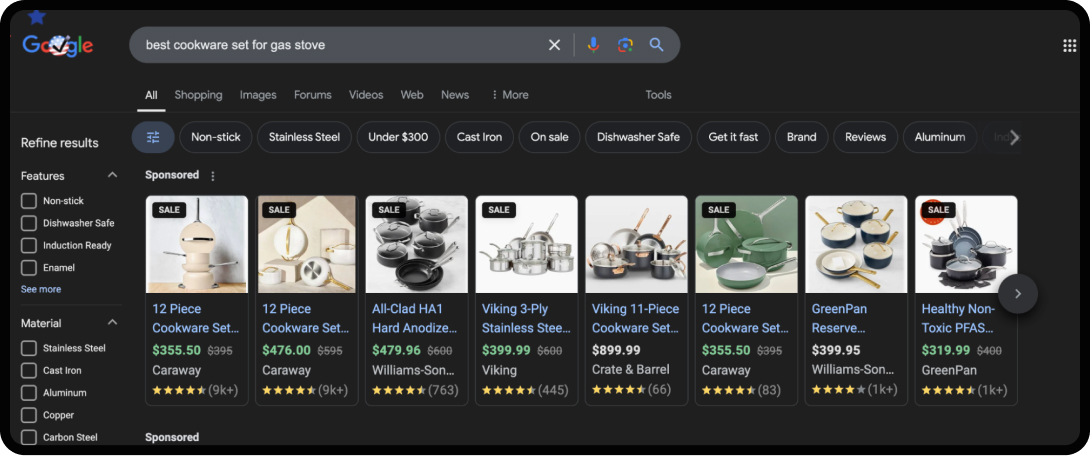SEO-rich text refers to content that is specifically optimized for search engines to improve visibility and ranking on search engine results pages (SERPs). This type of content incorporates various strategies and elements designed to align with search engine algorithms, making it easier for search engines like Google to understand and index the information provided.
In this article, we will explore the key techniques and best practices for optimizing your web content to maximize visibility and drive meaningful engagement. Whether you’re a seasoned digital marketer or a small business owner looking to improve your online presence, understanding how to leverage SEO-rich text can be a game-changer for your brand.
Drive Sustainable Engagement With SEO
What Are Rich Snippets?
Rich snippets, or rich results, are enhanced search results that provide additional information beyond the standard title, URL, and meta description displayed in SERPs. They’re designed to give users more context about the content of a webpage, making it more attractive and informative, which can lead to higher click-through rates (CTR).
Types of Rich Snippets
- Product Snippets display product details like price, availability, and ratings.
- Recipe Snippets include cooking times, calorie counts, and user ratings for recipes.
- Review Snippets show ratings from review platforms for various products or services.
- FAQ Snippets present a list of questions and answers related to the content.
- Event Snippets highlight important details about events such as dates and locations.

Benefits of Being Featured in Rich Results
Rich results are visually appealing and contain additional information such as images, ratings, and prices, making them more enticing than standard search listings. This enhanced presentation can significantly increase CTR; studies indicate that rich results can boost clicks by up to 30% compared to traditional listings. For instance, a product listing displaying star ratings and prices can attract more clicks from potential buyers than a standard blue link with the website name. By aligning content with search algorithms, SEO-rich text significantly enhances a website’s chances of appearing higher in search results, attracting more organic traffic.
4 Steps to Create SEO-Rich Text
1. Implement Structured Data
Structured data helps communicate the contents of a page to search engines. It uses specific schemas defined by Schema.org to help search engines understand the context of different types of content.
Each schema markup correlates with a different type of rich result, so you’ll need to add it individually for each type of content on your website.

Types of Schema Markup
There are lots of different types of schema markup, but six key ones to keep in mind are:

2. Keyword Research
Effective keyword research helps you grasp what users are searching for and why. This understanding allows you to create content that meets their needs.
To optimize your content for rich results, you’ll need to align your keyword strategies for users’ search intent (informational, navigational, transactional, commercial). For example, if you’re a eCommerce store selling gaming gear, you’ll want to optimize your content for commercial and transactional keywords to align with users who are searching for products to buy.
Long-tail keywords (3-5+ words) often have lower competition and higher conversion rates. Keywords between 10-15 words in length can get 1.76x more clicks than single-word terms due to their specificity.
Look at what keywords competitors rank for, especially those that appear in rich results. This analysis can uncover opportunities for you to target similar or related keywords.
Once you identify suitable keywords, implement structured data markup corresponding to those keywords. For example, if you’re targeting keywords related to gaming gear, use Product Schema to mark up prices, availability, shipping times, and ratings.
3. Optimize Headers
Header tags help communicate to search engines what your content is about. In the context of rich snippets, header tags that are optimized with keywords that match user intent can help search engines identify and select your content for rich results. Incorporate primary and secondary keywords into your header tags (H1, H2, H3, etc.). Since search engines pay special attention to headers, using relevant keywords helps signal the content’s topic and improves its chances of appearing in rich results.
For example, if your product page features gaming keyboards, include this phrase in your H1 and semantically related keywords in H2s and H3s. You should include long-tail keywords in your headers as much as possible since they’re less competitive.
Your H1 tags should be between 50-60 characters. While your H2 and H3 headers don’t have a specific recommended length, they should be concise yet informative. Each header should accurately describe what the section of the page will cover, helping communicate your content to both search engines and users.
4. Add Alt Text
Search engines use alt text to determine what an image represents and how it relates to the content on the page. By providing descriptive and relevant alt text, you help search engines understand the context of the image, which can increase the likelihood of your images appearing in rich results or image search results.
Including relevant keywords in your alt text signals to search engines what your images — and by extension, your content — are about. However, it’s essential to avoid keyword stuffing; instead, use keywords naturally within the context of a descriptive phrase. This practice not only aids in image search rankings but also helps your content rank better overall, increasing visibility in rich results.
Descriptive and contextually relevant alt text can improve your chances of being selected for rich snippets. For instance, if you have a product image with well-optimized alt text that includes specific details about the product (like its name and features), it may be displayed as part of a rich snippet when users search for related queries. This is particularly relevant in Google’s AI Overview, which highlights products and services based on detailed contextual information.
SEO Rich Text Boosts Organic Visibility
While rich snippets do not directly influence search rankings, they significantly boost online visibility. By making search results more attractive and informative, SEO-rich text increases impressions and clicks, leading to greater organic traffic. As more users engage with your content, search engines interpret this as a signal of relevance and quality, which can improve overall visibility in SERPs.
SEO-rich text enhances the user experience by providing relevant information upfront. This not only keeps users on your page longer but also encourages them to interact with your content. Engaged visitors are more likely to convert into customers or subscribers, further boosting your site’s performance metrics and organic visibility.
By using structured data and rich snippets, SEO-rich text helps attract visitors who are actively searching for specific products or services. This targeted approach means that the traffic coming to your site is more likely to convert, as these users have already shown interest in what you offer based on the detailed information presented in the search results.






